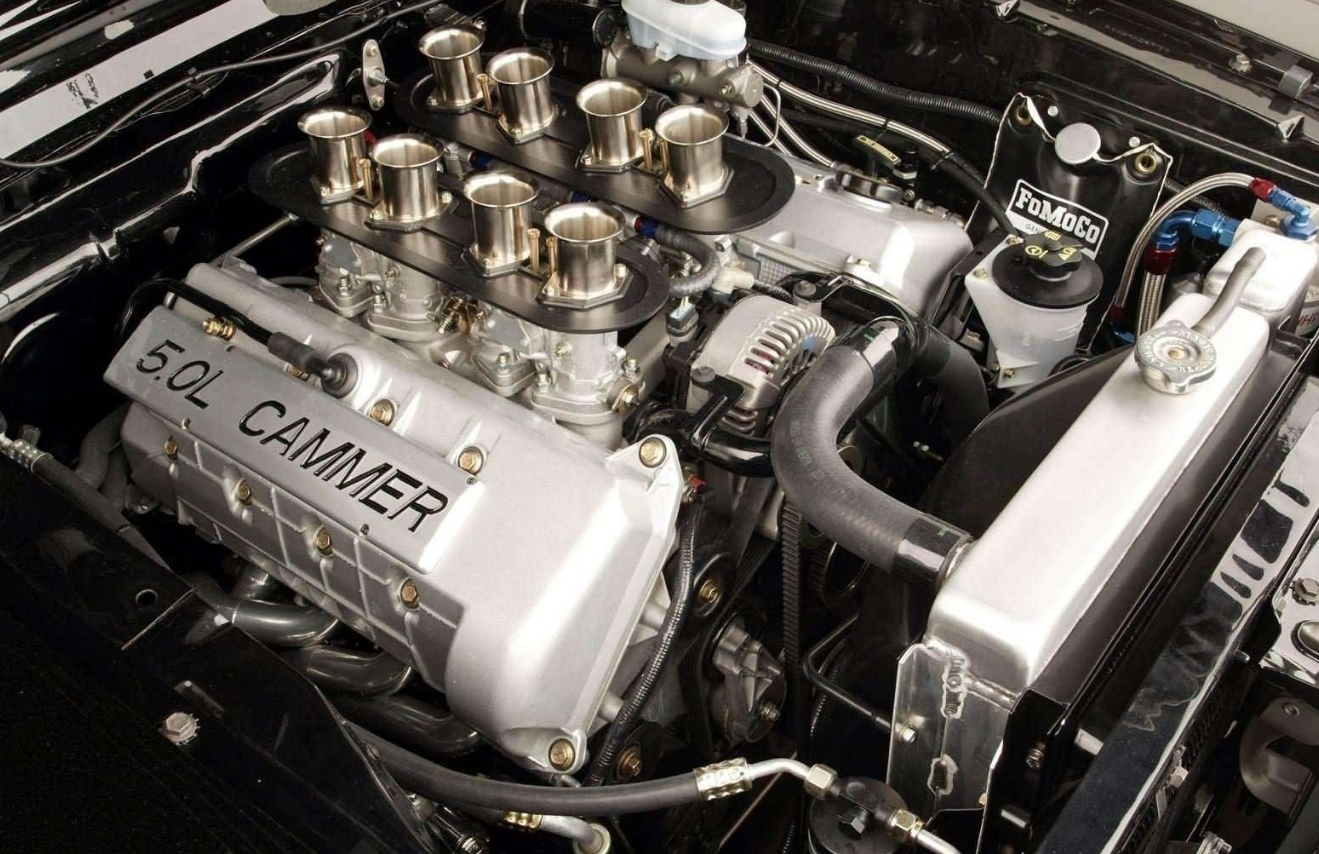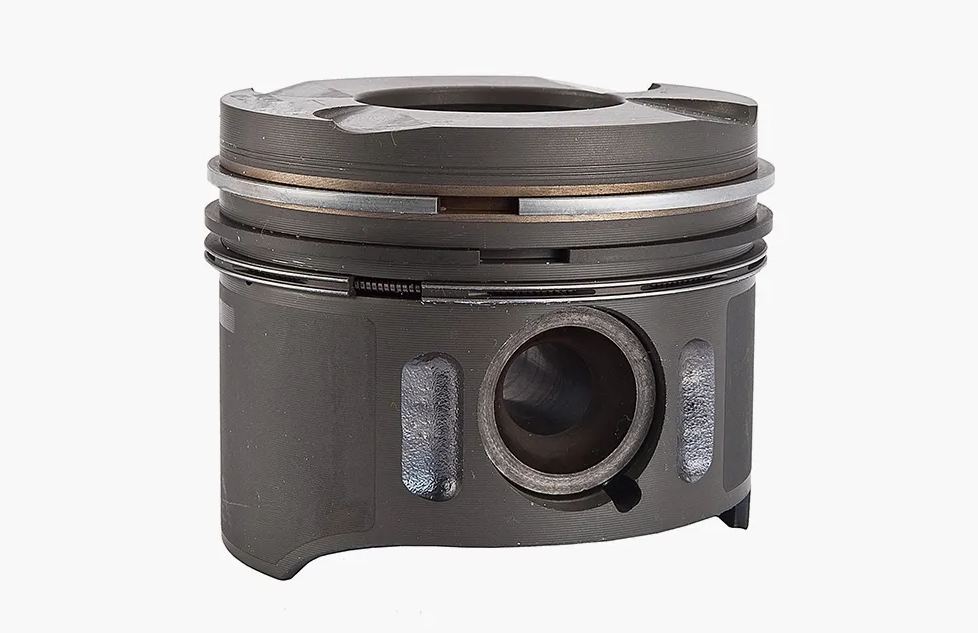
In this article I will tell you what the engine running-in period is, what types of running-in periods there are, and how to run-in the engine on a new car. I will discuss how long the running-in period should be, whether it is necessary to undergo zero maintenance and what mistakes can lead to problems with the operation of the engine.
What is the running-in period for an engine
Brand-new engine parts look smooth and even. But if you examine them closer, you can see small nicks and irregularities on them. These will all wear off during the running-in period. The most important part is the piston rings, these make contact with the cylinder walls. Their nicks and grooves need to be ground down, and the parts need to rub against each other as firmly as possible.
Different lapping techniques are used in the production for this purpose. For example, the contact part of the ring is not straight, but slightly angled. This ensures the “raised” part is worn out sooner and the ring is lapped firmly against the cylinder wall. In some cases a very thin layer of soft metal may be used for the contact area between the rings and the piston wall, which rubs off quickly during the first minutes of engine operation. But this does not mean that the running-in period is over and the engine can be used to its full potential.

Running-in additives can be found on the market that are added to engine oil or fuel. In their descriptions, manufacturers claim that their product helps you run in parts faster and better, reduce noise, vibration, oil and fuel consumption and increase engine life. We do not recommend the use of such additives: it is not known how useful they really are, but they may be harmful.
There is also running-in oil. This is said to have been used at the factory, but now cars leave the assembly line with recommended oil: the same oil that will be used for maintenance. Running-in oil can be used in an engine that has been overhauled.

When the engine needs a running-in period
On a brand new engine that is in a brand new car. Engines are tested at the factory on a special running-in stand. Some purchasers are convinced that this is the running-in process and that there is no need to run in the new car from the showroom. They don’t usually write about the running-in period in the owner’s manual either.
But a part of car makers still recommend not driving at higher rpm for the first time. This may have a positive effect on engine life and the service life of the vehicle.
On the engine, which has undergone overhaul. In such engine, apart from some special works like short-block replacement or cylinder boring, the basic details – pistons, piston rings, conrod liners, scraper caps, timing belt or chain, gaskets and seals – have been replaced. The piston rings need to be lapped on the cylinder walls just like on a brand new engine.
Failure to run in the engine properly after an overhaul may lead to a loss of compression, increased oil and fuel consumption and a shorter service life of the overhauled engine.
What type of running-in phase is possible?
Cold running-in.
It is a common opinion among car owners that it is not necessary to run in a new car, as it was already run in at the factory. They are partially right: engines are actually tested at the factory. It is a cold running-in.
It is made on a special running-in stand. The engine is not started, no fuel is fed to it. Oil and coolant are already in the engine. An electric motor is connected to the crankshaft, which starts rotating the crankshaft at a low speed and gradually moves it to a higher speed. This is controlled by a running-in computer programme. Sensors are also involved in the process to monitor the condition of the machine.
The running-in phase is used to detect factory defects, faults and irregularities. At this stage, the parts are finally adjusted so that the engine can be checked before it is ready to be installed on the vehicle. In parallel, the parts are running in, but not definitively. This requires a hot running-in phase.
Hot running-in
hot running-in may be carried out on a special fuel pumping station that is able to pump fuel and evacuate the exhaust gases. This is the case with high-powered vehicles that are designed for high-speed driving. Conventional vehicles can already be hot run-in on their first owner – if the owner has seen fit. This is a few short cycles during which the engine is started, warmed up and allowed to cool down.
A hot running-in at different idle and unloaded speeds is mostly done after an engine overhaul. After this stage, the hot running-in phase is ready for operation, i.e. on the road.
For most vehicles, the optimum running-in range is 2000-4000 rpm. But due to the fact that powerful and diesel engines are capable of high revolutions, the universal range is mid-range. It is not necessary to be guided by the speed of the car. At these revs, it can be different – depending on which gear is engaged.
During the running-in period, you should not drive a trailer, tow the car, i.e. subject parts to increased loads. All gear changes, acceleration and braking should be smooth.
How to run-in the engine after a complete overhaul
Ensure good mains voltage. Bumps in the new parts will make the first revolutions of the crankshaft difficult to achieve. It is therefore important that the battery is fully charged and that the starter is working properly. This is important because an engine overhaul is a procedure for vehicles with serious mileage.
Pour in quality engine oil. There is an opinion that it is worth pouring in cheap oil for the running-in period, and once it runs out, dump it and change for good oil. The truth is that the running-in period is an increased load on the engine, that’s why the oil should be of good quality. A special mineral-based running-in oil is suitable for this purpose.
At low or even room temperature the oil is relatively thick, so the engine should not be started straight away. It is important to allow time for the oil to finally drain into the engine sump. The oil level should be at the maximum mark, but not above it. When the engine is started, some oil will flow into the oil filter and the oil level will drop. It is not a good idea to fill the filter with oil beforehand.
Start the engine and check the oil pressure. The easiest way to check the working pressure is on the dashboard. After the engine has started the control lights will come on, including the oil pressure control light. It should extinguish after two or three seconds of engine running. If it has not happened, urgently shut down the engine and identify the cause of compression loss. Do not step on the accelerator pedal – that would be a risk of engine damage.
Warm up the engine. If there’s nothing wrong with the oil pressure or leaks, warm the engine up to operating temperature at idling speed.
Turn off the engine so that it cools down to about half the operating temperature. This prevents the parts from overheating from friction and deforming.
Repeat several warm-up and cool-down cycles at idle speed.
Run in at high revs. After all idle running-in cycles have been completed, you can gradually increase the crankshaft speed. To start with a little pressure on the accelerator pedal and stop at the level of 1500 rpm, let the engine work in such mode for two-three minutes. Then revolutions may be increased to 2000 and hold for about five minutes.
The engine should not make strange noises and should not smoke strongly. A slight puff of smoke is acceptable if the oil comes into contact with the heated engine surfaces.
How to run-in the engine on the road
These tips work for both a new car and one that has gone through all the procedures in the previous chapter.
Do not exceed the speed limit. During the running-in period, it is advisable to keep the revs at medium speed. It is impossible in city traffic, therefore in ideal conditions it is better to drive the engine in the countryside. It is not recommended to monotonically keep the same speed, for example, 90 km/h, or to exceed speed, raising revolutions up to a maximum.
Some drivers hang a triangular sign “80” on the rear window, and sometimes add something like: “I’m not braking, just revving up the engine”. Such a person can drive at 80 km/h on the motorway without the risk of inconveniencing other road users.
Do not overload the engine for the first 500 km. This period is especially important for the running-in period. Severe operating conditions should be avoided: cold starts, long climbs. During the running-in period, avoid driving with maximum load in the passenger compartment and luggage compartment, driving with a trailer and towing.
How long does it take to run-in an engine
It used to take 5,000-10,000 km to run in older vehicles. Today, other technologies and materials are used in the automotive industry, so modern engines run in much faster: 1,000-2,000 km is enough for the parts to get used up.
Some dealers recommend having zero maintenance – replacing oil and oil filter – at 2000 km already. During the running-in period, most metal particles get into the oil, which clog the oil filter and interfere with oil circulation. Therefore, zero maintenance at low mileage is not a marketing ploy, but a real benefit. After this procedure, you may consider that the minimum necessary running-in is completed.
Some owners prefer to keep their cars from overloading up to 5,000 to 10,000km. This won’t harm a modern engine, but it’s not necessary.
Consequences of incorrect running-in
The cylinder walls can overheat, warp and even crack. In the latter case, antifreeze is likely to enter the engine. This is the case when a new or renovated engine is exposed to high loads for a long time: for instance, when the tachometer needle is in the red zone, or the car is dragging a heavy trailer uphill. No light will be illuminated on the instrument panel.
The cylinder walls may be mechanically damaged. We’ve written about the rough edges of new piston rings: if you try very hard, they can leave marks. Compression rings won’t retain gases and the lube ring won’t remove excess oil, which means the engine will start to consume it.
The piston rings will not rub against the cylinder walls. Engine output will drop and fuel and oil consumption will increase.
The engine could seize up. You will have to take everything apart again, buy spare parts and pay for expensive work.
If the engine starts to smoke heavily and makes a strange noise, it is best to shut it down immediately and look for the cause. Although a little smoke is acceptable when overhauling an engine. This is because a small amount of oil may have come into contact with the parts during engine overhaul and when heated it burns and smokes.
Remember:
- For the first 1000 km, try not to drive at too high a speed.
- Accelerate and brake smoothly.
- During the running-in period do not overload the car, drive a trailer or tow another car.
- Allow the engine to warm up to operating temperature at idling speed before each journey.
- Continuous driving in the same gear at the same speed at the same revs is not good for the engine during the break-in period.
- Around 2,000 km is enough to complete the running-in period for modern engines.
- The oil and oil filter should be changed after 2000 km.
